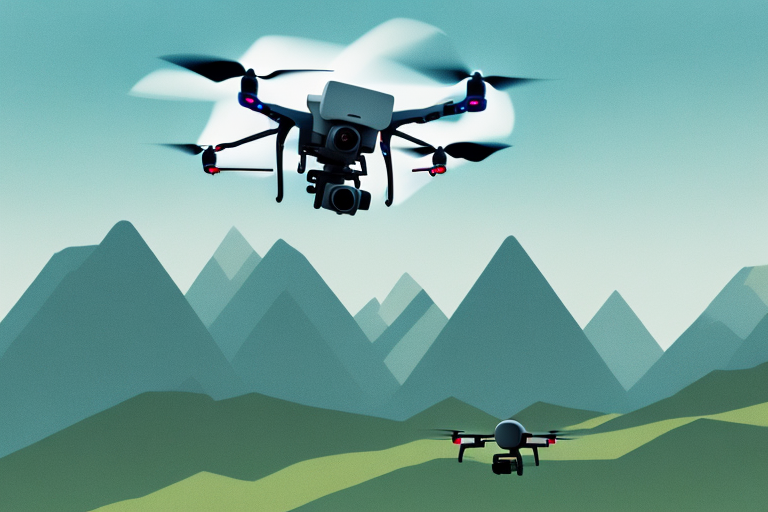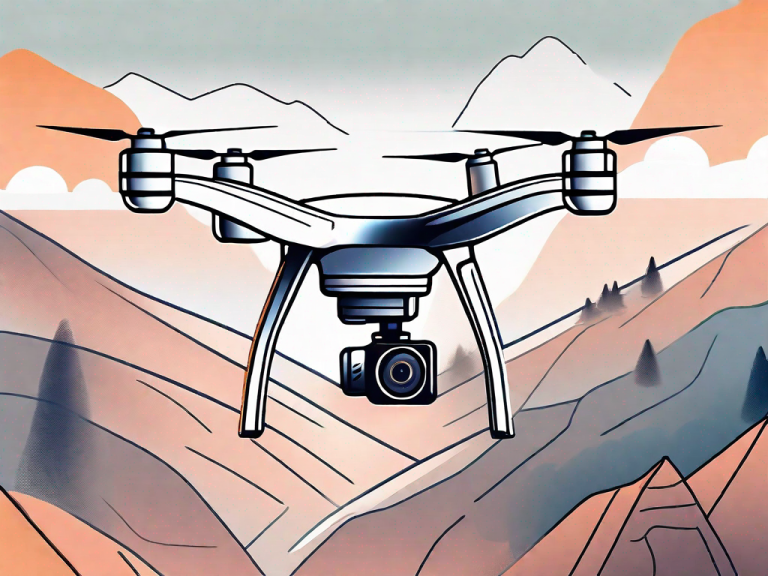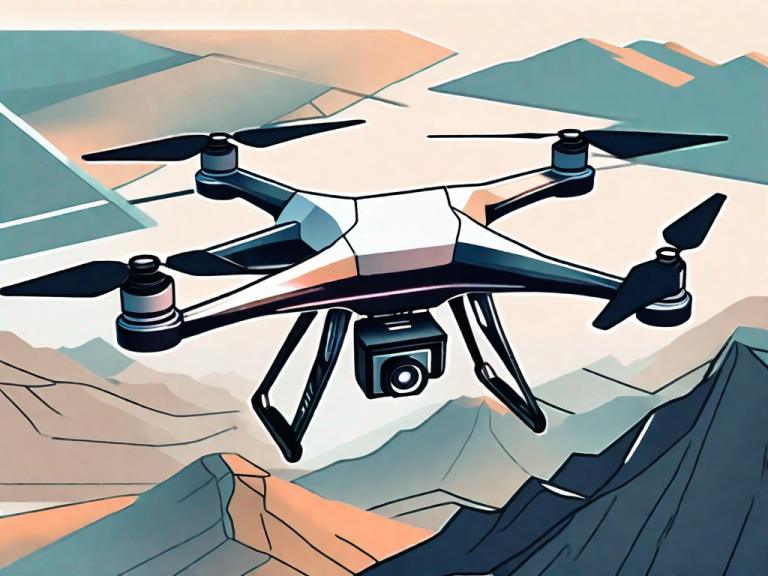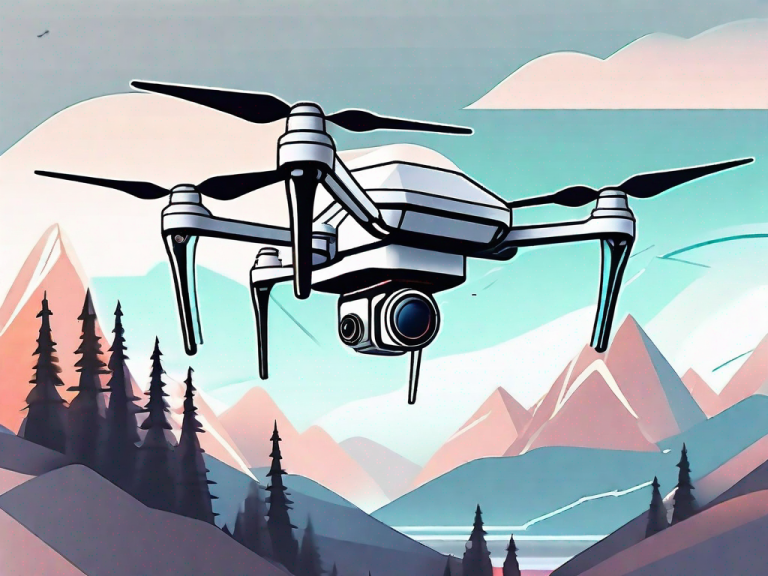Drone photography offers a unique perspective by capturing captivating aerial views. To make your drone photographs stand out, it is crucial to create a strong focal point that draws the viewer’s attention and guides them through the image. In this article, we will explore the key considerations for creating a powerful focal point in drone photography and discuss various techniques to achieve this.
Understanding the importance of a focal point in drone photography
Having a focal point is essential in any form of photography, and drone photography is no exception. A focal point serves as the visual anchor of an image, giving it purpose and direction. It helps engage the viewer and leads their eyes to explore the scene further. When capturing aerial photographs with a drone, it is essential to understand the significance of a focal point in creating impactful and visually pleasing images.
One way to create a strong focal point in drone photography is by incorporating leading lines into your composition. Leading lines are elements within the image that guide the viewer’s gaze towards the main subject or point of interest. These lines can be natural, such as roads, rivers, or fences, or they can be man-made, like pathways or buildings. By strategically positioning your drone and framing the shot to include these leading lines, you can create a visual pathway that draws the viewer’s attention directly to the focal point.
In addition to leading lines, another effective technique for establishing a focal point in drone photography is through the use of color contrast. By placing a subject with vibrant or contrasting colors against a more muted or monochromatic background, you can instantly draw attention to the focal point. This contrast in colors creates visual interest and helps the subject stand out, making it the center of attention in the photograph. Experimenting with different color combinations and compositions can lead to striking and captivating drone images.
Exploring the role of composition in creating a strong focal point
Composition plays a crucial role in creating a strong focal point in drone photography. By carefully arranging the elements within the frame, you can guide the viewer’s gaze towards your chosen subject. The rule of thirds, for example, divides the frame into a grid of nine equal sections, enabling you to position your focal point at one of the intersection points for a more balanced composition. Additionally, leading lines, such as roads, rivers, or architectural features, can be used strategically to direct the viewer’s attention towards the focal point.
Another important aspect of composition in creating a strong focal point is the use of color. By incorporating contrasting colors or using a pop of color in your focal point, you can make it stand out from the rest of the scene. This can be achieved through careful selection of the subject or by post-processing techniques to enhance the colors.
Furthermore, the use of depth of field can also play a significant role in creating a strong focal point. By using a shallow depth of field, you can blur the background and make your subject appear sharper and more prominent. This technique helps to isolate the focal point and draw the viewer’s attention directly to it.
How to choose the perfect subject for your aerial photography
When selecting a subject for your drone photography, consider choosing something that stands out within the landscape and adds interest to the overall composition. Look for unique patterns, shapes, or contrasting colors that will grab the viewer’s attention. Landmarks, buildings, natural formations, or even human subjects can all serve as excellent focal points in drone photography.
Additionally, it is important to consider the weather conditions when choosing a subject for your aerial photography. Different weather conditions can dramatically change the appearance of a landscape and create unique opportunities for capturing stunning images. For example, capturing a subject during golden hour, when the sun is low in the sky and casts a warm, soft light, can add a beautiful and ethereal quality to your photographs. On the other hand, photographing a subject during stormy weather can create a dramatic and moody atmosphere. Experimenting with different weather conditions can help you create a diverse portfolio of aerial photographs.
The power of leading lines in directing the viewer’s attention
Leading lines are a powerful tool in drone photography for guiding the viewer’s attention towards the focal point. Use natural or man-made elements, such as roads, rivers, or even tree lines, to create lines that lead the viewer’s gaze towards your chosen subject. These lines provide a sense of depth and draw the viewer’s eyes through the image, making the focal point even more compelling.
One important aspect to consider when using leading lines is the angle at which they are captured. Experimenting with different angles can create different effects and enhance the overall composition of the photograph. For example, capturing leading lines from a low angle can create a sense of depth and make the viewer feel immersed in the scene.
In addition to creating a visual path for the viewer’s eyes, leading lines can also convey a sense of movement and dynamism in the photograph. By incorporating diagonal lines or curves, you can add a sense of energy and flow to your composition. This can be particularly effective when photographing subjects in motion, such as cars on a winding road or a person running along a beach.
Utilizing color and contrast to enhance your focal point
Color and contrast can play a significant role in highlighting the focal point in your drone photographs. Use vibrant colors or a stark contrast between the subject and the surrounding environment to make the focal point pop. Consider the time of day and how the quality of light can enhance colors and contrast to create a more visually striking image.
Additionally, you can experiment with different color grading techniques during post-processing to further enhance the impact of your focal point. Adjusting the saturation, hue, and brightness levels can help you achieve the desired mood and atmosphere in your photograph. Don’t be afraid to push the boundaries and try out unconventional color combinations to create a unique and captivating image.
Creating depth and dimension with foreground and background elements
Adding elements to the foreground and background of your aerial photographs can create depth and dimension, further emphasizing the focal point. By positioning objects strategically in the composition, you can lead the viewer’s eyes towards the main subject and create a more immersive visual experience.
One effective way to create depth and dimension is by using leading lines in your composition. Leading lines are lines that guide the viewer’s eyes towards the main subject. These lines can be natural elements such as rivers, roads, or tree branches, or they can be man-made objects like fences or pathways. By incorporating leading lines into your aerial photographs, you can enhance the sense of depth and draw the viewer’s attention to the focal point.
Understanding the rule of thirds and its impact on focal points
The rule of thirds is a fundamental principle in photography composition, and it can greatly impact the effectiveness of your focal point. By placing the focal point at one of the intersection points created by the imaginary grid, you can achieve a harmonious balance and create an image that is visually appealing to the viewer.
Additionally, the rule of thirds can also be used to guide the placement of secondary focal points in your composition. By aligning these secondary focal points along the imaginary grid lines, you can create a sense of depth and visual interest in your photograph. This technique can be particularly effective in landscape photography, where you may have multiple elements that you want to highlight within the frame.
Incorporating symmetry and patterns to draw attention to your subject
Symmetry and patterns can be powerful elements to draw attention to your subject. By capturing symmetrical scenes or repeating patterns, you can create a visually striking composition that naturally leads the viewer’s eyes towards the focal point. Look for symmetrical landscapes or architectural structures to incorporate into your drone photography for maximum impact.
Additionally, incorporating patterns can add depth and visual interest to your photographs. Patterns can be found in various elements such as textures, shapes, or colors. Experiment with capturing repetitive patterns in nature, like rows of trees or waves on a beach, to create a sense of rhythm and harmony in your images. Remember to consider the scale and perspective to enhance the impact of the patterns in your composition.
The influence of light and shadows on highlighting your focal point
Light and shadows can significantly impact the effectiveness of your focal point in drone photography. The way light falls on your subject can create depth, drama, and define the focal point. Experiment with shooting during different times of the day to take advantage of the unique lighting conditions and create captivating images that highlight your chosen subject.
Additionally, the direction of the light source can also play a crucial role in highlighting your focal point. Front lighting, where the light source is behind the photographer, can evenly illuminate the subject and minimize shadows. This can be ideal for capturing details and textures. On the other hand, side lighting, where the light source is at an angle to the subject, can create more dramatic shadows and emphasize the shape and form of the focal point. Backlighting, where the light source is behind the subject, can create a silhouette effect, adding a sense of mystery and intrigue to your image. Experimenting with different lighting angles can help you achieve the desired effect and make your focal point stand out even more.
Techniques for creating a sense of motion and dynamism in aerial photography
Aerial photography with drones provides a fantastic opportunity to capture images that convey a sense of motion and dynamism. Using techniques such as long exposures or capturing subjects in motion, such as moving cars or waves, can add a dynamic element to your images and enhance the impact of your focal point.
Another technique for creating a sense of motion and dynamism in aerial photography is to experiment with different angles and perspectives. By changing the altitude and angle of your drone, you can capture images that give the viewer a unique and dynamic viewpoint. For example, flying low to the ground and shooting upwards can create a sense of speed and movement, while shooting straight down from a high altitude can create a sense of depth and scale. Don’t be afraid to try different angles and perspectives to add visual interest and excitement to your aerial photographs.
Balancing simplicity and complexity in capturing a compelling focal point
Striking the right balance between simplicity and complexity is essential when capturing a compelling focal point in drone photography. It’s important to ensure that the focal point remains the main focus of the image without being overshadowed by excessive detail or clutter. Simplicity in composition can often convey a powerful and impactful message, creating a visually captivating photograph.
On the other hand, incorporating elements of complexity can add depth and interest to the image. By including additional layers or textures in the composition, the viewer’s eye is drawn to explore the various intricacies within the frame. This can create a sense of visual richness and provide a more immersive experience for the viewer.
Furthermore, the use of leading lines and perspective can enhance the overall composition and guide the viewer’s gaze towards the focal point. By strategically positioning objects or structures in the frame, the photographer can create a visual pathway that leads directly to the main subject, further emphasizing its importance and impact.
Employing different angles and perspectives to enhance your subject’s impact
Experimenting with different angles and perspectives can help enhance the impact of your subject in drone photography. By capturing the focal point from various vantage points, you can provide the viewer with a fresh and unique perspective, making the image more engaging and memorable.
Tips for finding unique and captivating focal points in various landscapes
Each landscape offers an abundance of unique and captivating focal points waiting to be discovered. To find such focal points, explore different areas, research popular landmarks, or observe the natural elements present in the landscape. By paying attention to details and being creative, you can uncover hidden gems that will elevate your drone photography to new heights.
Harnessing the power of storytelling through your chosen focal point
Drone photography allows you to tell a story through your images. By selecting a compelling focal point that conveys a specific narrative or emotion, you can captivate the viewer and create a powerful visual story. Consider the story you want to tell and how the focal point can contribute to its overall message and impact.
Overcoming challenges in selecting a strong focal point in drone photography
Selecting a strong focal point in drone photography can present challenges, particularly when faced with vast landscapes or busy cityscapes. To overcome these challenges, take your time to observe, find focus within the chaos, and experiment with different compositions and angles. It’s important to remember that patience and practice will ultimately lead to stronger images with impactful focal points.
Examining successful examples of aerial images with strong focal points
Examine successful examples of aerial images with strong focal points from experienced photographers. Study how they effectively created a focal point and how composition and other techniques were employed to make the subject stand out. Analyzing and understanding these examples can provide inspiration and guidance to enhance your own drone photography skills.
In conclusion, creating a strong focal point in drone photography requires careful consideration of composition, subject choice, light, and various other factors. By understanding the key considerations discussed in this article and implementing the techniques provided, you can capture compelling and visually striking drone photographs that engage the viewer and leave a lasting impact.









